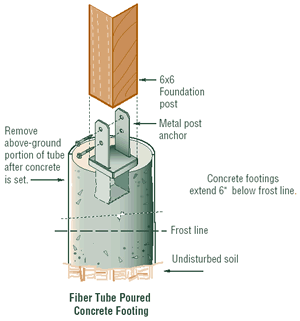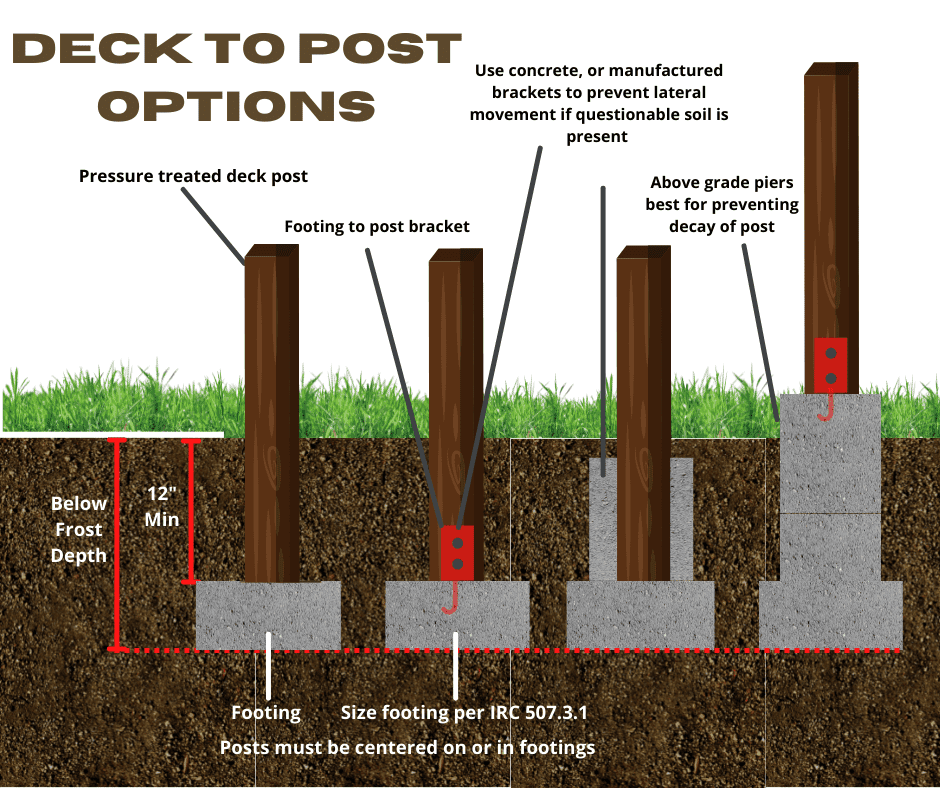Building a Solid Foundation: Unveiling the Keys of Deck Footing
When it pertains to constructing a deck, one vital aspect that frequently goes forgotten is the structure or ground. A strong and properly designed deck footing is vital for the security and durability of any kind of deck framework. In this informative overview, titled "Structure a Solid Foundation: Introducing the Tricks of Deck Ground," we will explore the relevance of appropriate footings, the different kinds readily available, and the elements to think about when choosing the right ones for your deck job. Furthermore, we will provide detailed instructions on exactly how to prepare and mount grounds properly. Last but not least, we will talk about the significance of normal maintenance and inspection to guarantee the ongoing safety and toughness of your deck grounds. Join us as we discover the tricks to building a trusted deck structure.
Importance of Correct Grounds

Among the primary factors why proper grounds are crucial is to stop the deck from sinking or changing. Grounds that are not deep adequate or are badly built can trigger the deck to work out unevenly or shift with time. This can lead to an unequal deck surface area, causing a tripping risk and compromising the structural honesty of the whole deck.

Moreover, appropriate grounds likewise aid to secure the deck from moisture damage. By boosting the deck structure above the ground, footings avoid the wood from entering direct contact with moisture, reducing the danger of rot and decay.
Types of Deck Grounds
The option of appropriate deck grounds is an essential facet in ensuring the security and durability of a deck structure. There are a number of sorts of deck grounds that can be made use of, each with its very own advantages and factors to consider.
One typical kind of deck ground is the concrete pier ground. This entails excavating holes in the ground and pouring concrete to create a solid foundation for the deck. Concrete piers are functional and can be made use of in a variety of dirt problems, making them a preferred choice for several deck jobs.
One more alternative is the helical pier ground. This kind of ground is composed of a steel shaft with helical plates that are screwed right into the ground.
For decks developed on shallow or flat structures, a shallow ground might be proper. Superficial footings are commonly made of concrete and are positioned straight on the ground surface area. They are best suited for smaller sized decks or areas with steady soil problems.
Variables to Consider When Picking Grounds
When choosing footings for a deck, it is essential to meticulously think about a number of factors that will eventually identify the security and longevity of the structure. The initial variable to consider is the kind of dirt on which the deck will be developed. Different soil types have varying load-bearing abilities, so it is essential to assess the dirt's capacity to support the weight of the deck. In addition, the environment of the area should likewise be considered. Extreme weather problems, such as freezing temperature levels or heavy rainfall, can impact the ground and potentially create motion or shifting of the footings. One more crucial variable is the size and height of the deck. Bigger decks with several levels or heavy loads require more significant footings to provide appropriate assistance. The materials utilized for the footings must be selected sensibly. Usual options include concrete, helical piles, and sonotubes. Each material has its benefits and negative aspects, so it is crucial to think about elements such as price, convenience of installation, and maintenance needs. Seeking advice from with an expert engineer or professional can provide beneficial insights and guarantee that the picked grounds satisfy neighborhood structure codes and laws. By meticulously taking into consideration these factors, homeowners can make enlightened choices when picking footings for their deck, making sure a published here stable and resilient framework.
Actions to Prepare and Install Footings
To prepare and install grounds for a deck, it is essential to follow a methodical strategy that ensures security and durability. The very first step is to determine the dimension and number of grounds needed based on the deck design and regional building codes. It is important to dig deep into the soil to the called for depth, guaranteeing that all-time low of the ground rests on undisturbed soil or compressed gravel. The following step includes placing a concrete type tube or footing type in the hole, making sure it is level and. The kind ought to extend above the ground level to prevent water damage. Afterwards, reinforcing steel bars, or rebar, are placed inside the type to provide added stamina. The rebar ought to be appropriately secured and spaced according to the engineering specifications. As soon as the form and rebar are in location, concrete can be put into the form, filling it to the top. The concrete needs to be consolidated and smoothed making use of a shovel or a concrete vibrator. The concrete requirements to heal for the recommended period prior to any kind of added building takes area. By complying with these steps meticulously, one can ensure that the grounds are effectively prepared and installed, supplying a solid structure for the deck framework.
Maintenance and Examination of Deck Footings
To ensure the long-term stability and security of your deck, regular upkeep and complete assessments of the deck grounds are vital. The deck footings act as the structure of your deck, visit here supporting the weight and load of the whole framework. With time, these grounds can experience damage because of numerous factors such as climate condition, dirt activity, and the natural aging process. It is essential to execute routine maintenance to recognize any kind of prospective issues and address them without delay.
Regular maintenance ought to include visual examinations of the grounds, looking for indications of damage or wear and tear. These can consist of cracks, sinking or moving of the footings, or indicators of water damages. Additionally, it is essential to examine the stability of the grounds by using stress or conducting lots examinations if essential.
Along with visual examinations, it is advised to set up expert inspections every few years. Specialists can assess the architectural honesty of the footings extra accurately and give skilled advice on any kind of required repair work or replacements.
Moreover, correct maintenance likewise entails taking precautionary measures to secure the grounds (Deck Footings). This can include applying waterproof layers to prevent water damage, making certain proper water drainage to stay clear of extreme dampness, and regular cleansing to get rid of particles and avoid accumulation
Verdict
In see page conclusion, proper deck footings play a crucial function in making certain the security and durability of a deck. By understanding the various sorts of grounds available and considering aspects such as soil problems and neighborhood building regulations, home owners can make enlightened decisions when choosing grounds for their deck. In addition, regular upkeep and inspection of deck grounds is essential to determine any kind of potential issues and ensure the safety and security of the structure.
In this informative overview, titled "Structure a Strong Foundation: Revealing the Secrets of Deck Ground," we will certainly check out the significance of correct footings, the various types available, and the aspects to consider when selecting the ideal ones for your deck project.One typical type of deck footing is the concrete pier ground.To ensure the long-term security and safety and security of your deck, routine maintenance and extensive inspections of the deck footings are crucial.In final thought, proper deck grounds play an essential role in ensuring the security and longevity of a deck. By recognizing the different types of footings offered and taking into consideration aspects such as dirt conditions and neighborhood building codes, house owners can make educated choices when choosing grounds for their deck.